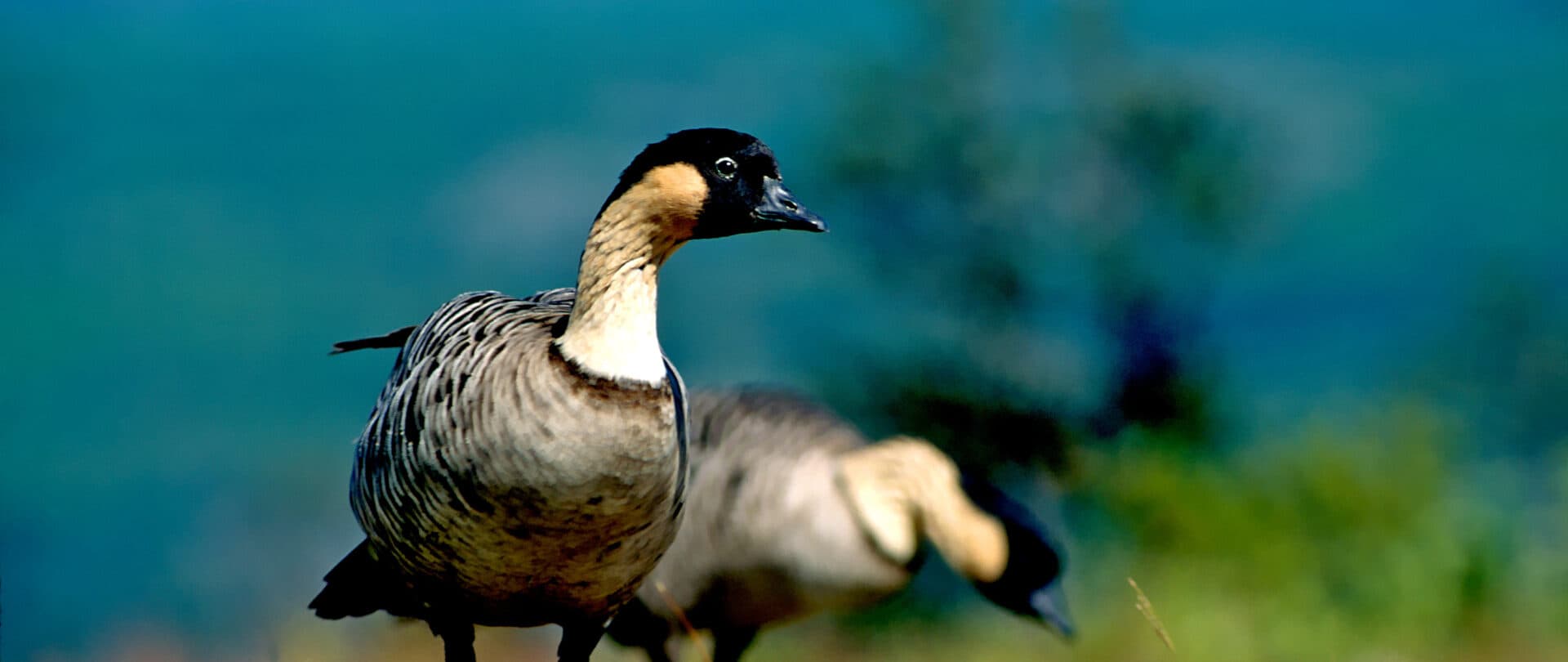
The Hawai‘i State Bird
The nēnē—rarest goose of them all
Nēnē, the Hawaiian Goose, is the rarest goose in the world and is endemic to the Hawaiian Islands. It evolved from the Canada goose, and most likely arrived around 500,000 years ago. The once almost extinct bird gets its Hawaiian name for the soft honking calls it makes. The nēnē has strong toes with reduced webbings as an adaptation to the rocky lava flows on which it breeds and lives. The nēnē is unique from other waterfowls in that they mate on land. They breed between August and April, the longest breeding season among other goose. The female builds her nests in the concealment of bushy pockets of vegetation and lays one to five eggs. The female incubates her eggs about 30 days while the male is on the lookout for predators such as the mongoose.
